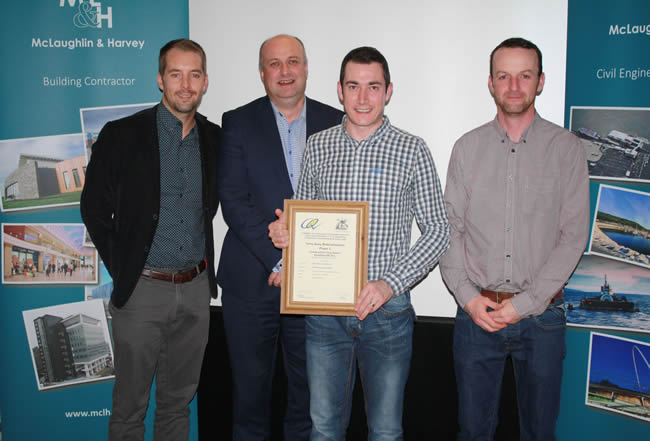Tory Quay Redevelopment |
|
Construction Only Award
Project Team
Client: Aberdeen Harbour Board
Designer: Arch Henderson
Construction: McLaughlin & Harvey
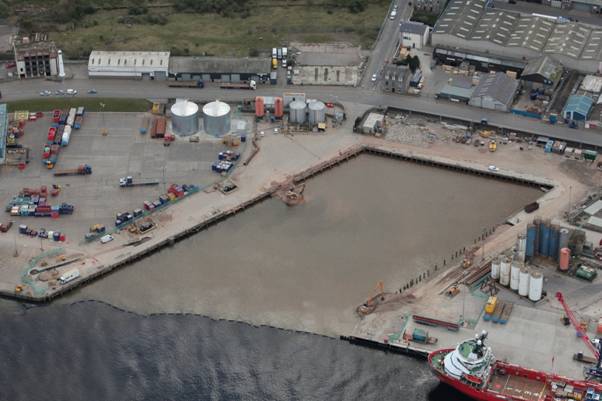
Challenges Faced
Water Environment and Marine Ecology
Scottish Natural Heritage advised that the proposed development was located within the catchment of the River Dee, which is designated as a Special Area of Conservation (SAC) under the EC Habitats Directive for important populations of Freshwater Pearl Mussel, Otter and Atlantic Salmon. Also, the Aberdeen Harbour area is also identified as an important feeding area and transit route for the Moray Firth (SAC) Bottlenose Dolphin population.
The mitigation strategy adopted to protect the local ecology included the use of an extensive silt curtain during the infilling operation; scientific scrutiny was achieved through the deployment of a turbidity buoy and via periodic water quality testing which ensured that key parameters could be monitored throughout the works, with fully transparent reporting to stakeholders.
During dredging works, an Marine Mammal Observer was utilised and, working in conjunction with Aberdeen Harbour Board, ensured that the area was free of cetaceans and pinnipeds. Soft start methods ensured that any undetected animals were able to leave the vicinity of the works and therefore minimising the risk of harm.
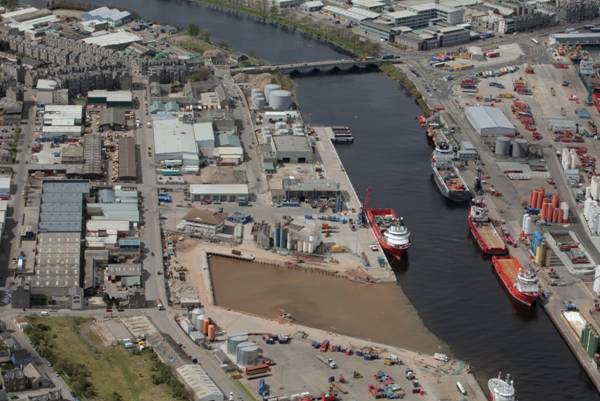
The use of lighting towers was allowed on the site during the construction, however these were strategically positioned to minimise light pollution to both terrestrial and marine receptors.
McL&H installed four Klargester Class 1 By-pass Separators into the reclamation areas drainage network as part of the permanent design, to enhance and protect the long-term health of the local water resource. The installations will fully treat runoff from flows generated by 99% of rainfall events, minimising the negative environmental impact of hydrocarbons during the operational phase of the scheme.
Working closely with the Client's Ecological Clerk of Works and regulatory/advisory body representatives in the area, the team managed to effectively diminish the risk to the natural water environment during the construction process.
Material Use & Waste Minimisation
The significant resource required for infilling of the quay area demanded that a detailed consideration of the material specification was undertaken, focused upon the identification of local opportunities for reuse and the procurement of locally quarried materials. This resulted in 1554 Tonnes, or 78%, of the total on-site demolition waste being reused as fill, and over 12,000m3 of spoil material from previous phases being incorporated into the reclamation zone. The project team maximised the use of locally reclaimed fill, thus minimising the extraction of virgin materials and making significant cost and carbon savings.
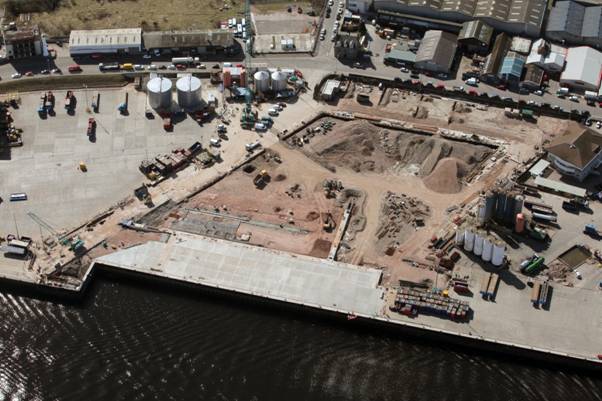
Local Community and Stakeholder Liaison
McL&H worked in conjunction with Aberdeen Harbour Board to ensure that stakeholders were provided the opportunity to engage and influence the project. AHB incorporated the project progress into their public meetings and represented scheme stakeholders during Torry Quay Community Council meetings. With clearly defined channels of communication, effective dialogue and action between the parties involved was achievable. As part of the Considerate Constructor's Scheme (CCS), the project welcomed compliments and complaints from local residents, with the feedback helping the team to implement further nuisance reduction measures where necessary.
Although the impact of noise generation was deemed to be of relatively low significance according to the Environmental Statement, Continuous Flight Auger (CFA) piling methods were adopted where feasible to help minimise nuisance to the local community and other sensitive receptors.The project team engaged with local nurseries, schools and colleges, providing various donations to help stimulate the relevant level of learning, ranging from construction toys to site tours. To what extent did the use of CEEQUAL influence your project? CEEQUAL registration helped bolster the overall sustainability of the construction process, from planning to conception, with the level of scrutiny optimising the effectiveness of decision-making and subsequent implementation. It has allowed McLaughlin and Harvey to improve upon project performance levels, and therefore provides a distinct opportunity to demonstrate corporate continuous improvement. Phase 3 of the Torry Redevelopment was primarily an infilling operation, and the assessment process provided a robust tool to analyse and evaluate the efficiency of material sourcing and use, helping to maximise reuse, minimise waste and encourage the use of local products and services to ensure sustainable project delivery. Being part of the River Dee (SAC) catchment and with noted significance to the Moray Firth (SAC), ecological and other environmental sensitivities were prioritised. The CEEQUAL assessment helped the team to maintain focus upon such key areas, whilst allowing them to incorporate and fully consider the wider social and economic issues & impacts associated with the project. |
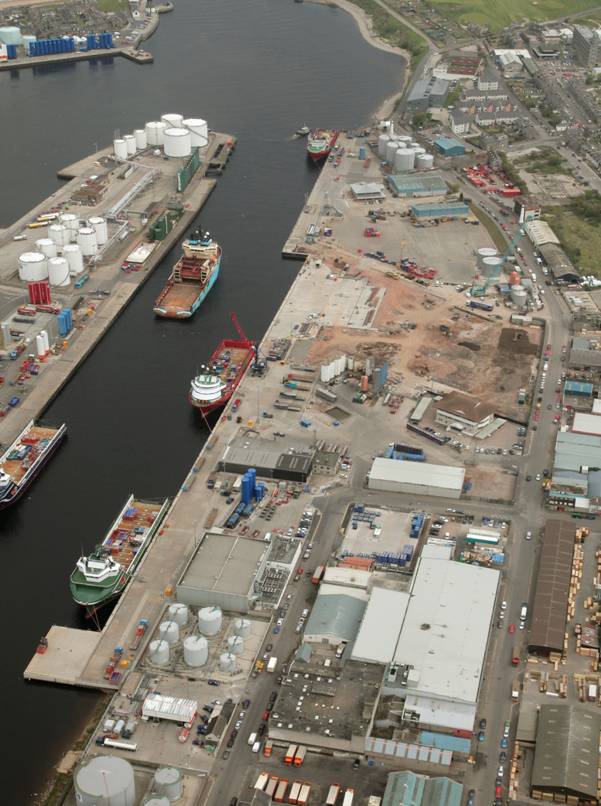 |
